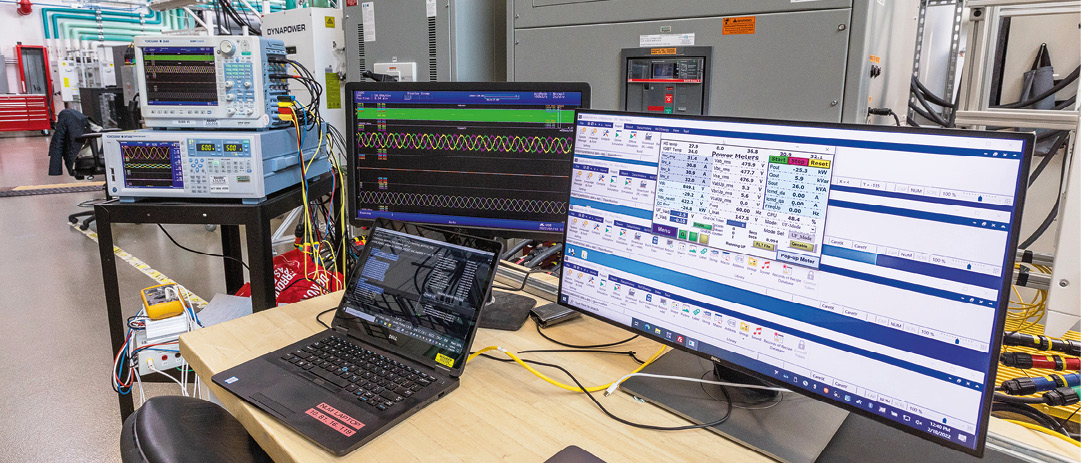From pv magaizne 09/2022
In recent decades, the United States has made unprecedented technical advancements in a broad array of clean energy solutions with the potential to decarbonize the grid while making it more equitable and resilient. We now find ourselves in a new stage of the clean energy revolution and on the cusp of a dramatic transformation of the electricity sector.
The speed at which this transformation occurs will be determined not by the pace of technical innovation, but by the availability of debt financing for unfamiliar technologies and the ability of innovative grid-scale solutions to tap into viable business models. This is particularly true for virtual power plants (VPPs).
As we view it at the US Department of Energy’s Loan Programs Office (LPO), a VPP is a virtual aggregation of distributed energy resources (DERs) like PV, energy storage, EV chargers and demand-responsive devices (such as water heaters, thermostats, and appliances). VPPs do more than provide decarbonization and grid services – they increasingly give grid operators a large-scale and utility-grade alternative to new generation and system buildout through automated efficiency, capacity support, and non-wire alternatives. By deploying grid assets more efficiently, an aggregation of distributed resources lowers the cost of power for everybody, especially VPP participants.
Market entry
In September 2020, FERC Order 2222 opened the door for VPPs in the United States. Nearly two years later, VPPs are just beginning to compete in organized capacity, energy, and ancillary services markets at a meaningful scale at the regional level. To truly unlock VPP’s potential, wide reaching deployment at the national scale is needed.
At the state and retail level, utilities have an important role to play in scaling up DER integration and automated demand response. Equally important will be the ability of VPP aggregators to secure revenue contracts that can underpin a successful business endeavor.
To unleash the capital that makes ratepayer and wholesale power cost reductions possible, incumbent financiers need to see lower customer acquisition costs and consistent revenues for the critical services provided. These and other challenges are far from intractable, and well-worth the cascade of benefits we expect to unlock if we come together to solve them.
Consumer advocates, local government, established utilities, and other partners that have earned the public’s trust across income strata can be important allies for aggregators looking to lower customer acquisition costs. Separately, open-source standards and packages like OpenADR, EcoPort, or other measures that enable intersystem transferability will be important tools to empower consumers by enabling them to switch aggregators.
As director of LPO, I lead the provision of public debt capital for technology projects in the US that are large-scale, innovative, and clean when private lenders cannot or will not lean-in. Bridging this gap while protecting the taxpayer interest is a challenge only surmountable with vast expertise across financial, technical, utility, and clean energy fields that comes together at a place like the Department of Energy. From this vantage point, my goal is to educate the audience on the essential nature of VPPs – there is simply no other cost-effective way to integrate electric vehicles and heat pumps at scale.
In pursuit of this educational role, I have surveyed the technical components of VPPs – from hard assets like PV, energy storage, and grid-interactive efficient buildings and appliances, to the core role of the software and control applications. I have looked at the importance of interoperability between VPPs and existing grid control systems, but also among software and the diversely sourced hardware of a VPP itself. One conclusion I have reached is that the technology has been available for decades but integrating and compensating these technologies remains elusive within utility planning.
To explore these challenges further, I will be looking at VPPs on the pv magazine USA site with a fresh lens – a new, follow-on video series. I’ll sit down with guests from around the US with real-world VPP experience as customers, operators, and regulators. We’ll talk about the benefits of VPPs in terms of resilience, equity, and decarbonization. As well as the growing pains they’ve witnessed as pioneers. We’ll look at what’s working, what needs improvement, and how we can help one another to realize the benefits of the technology’s progress. 
About the author
Jigar Shah is the director of the US Department of Energy Loan Programs Office. He gained prominence as an American clean energy entrepreneur, author, and podcast host. Shah is known for working to create market-driven solutions to climate change. He most recently served as president of Generate Capital, where he focused on helping entrepreneurs to accelerate decarbonization solutions through the use of low-cost infrastructure-as-a service financing. Prior to Generate Capital, Shah founded SunEdison, a company that pioneered “pay as you save” solar financing.
This content is protected by copyright and may not be reused. If you want to cooperate with us and would like to reuse some of our content, please contact: editors@pv-magazine.com.



Missing: any explicit mention of V2G. VW, Ford, Hyundai and Nissan already offer V2G-ready BEVs, and the others, including Tesla, will soon be forced by the market to follow suit. Since a typical BEV has 50 kwh or so of battery capacity, customers are choosing capacities far in excess of their typical daily needs out of range anxiety, and the number of cars sold is large, this will grow very quickly into a major resource. School and transit buses, with professionally managed fleets and predictable use cycles, are already leading the way.
Also missing: any explicit mention of consumer protection. Jigar Shah’ background is in utility PV, so he naturally focuses on the (entirely legitimate) utility perspective. But VPPs also raises tricky issues of privacy and, even more, transparency. The contractual obligations of a householder signing up as a VPP will be complex and there is a huge and exploitable information inequality between households and utilities. The algorithms implementing the contracts will be strictly inaccessible and incomprehensible to the former. The way forward here is heavy-handed regulation both of the substantive terms of contracts and the way they are marketed. Inattention to these concerns could lead to nasty blowback.
In fact there is a third sleeping partner to VPP contracts, local governments representing the public interest in emergencies. IMHO it is reasonable for disaster managers to be able to commandeer VPP resources from both utilities and households if necessary. This needs to be planned, not improvised, and made explicit.